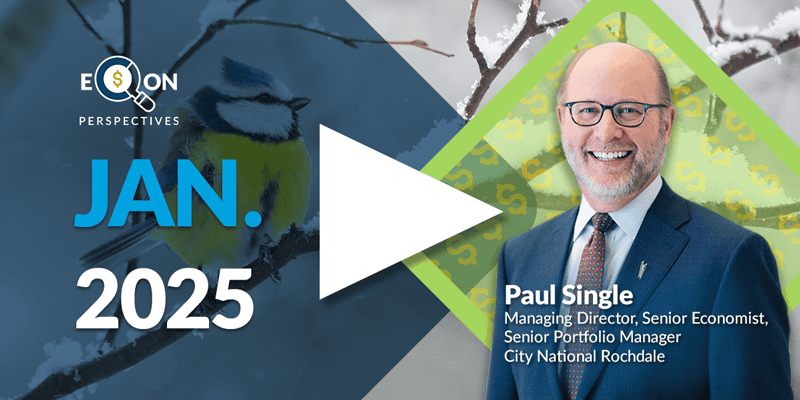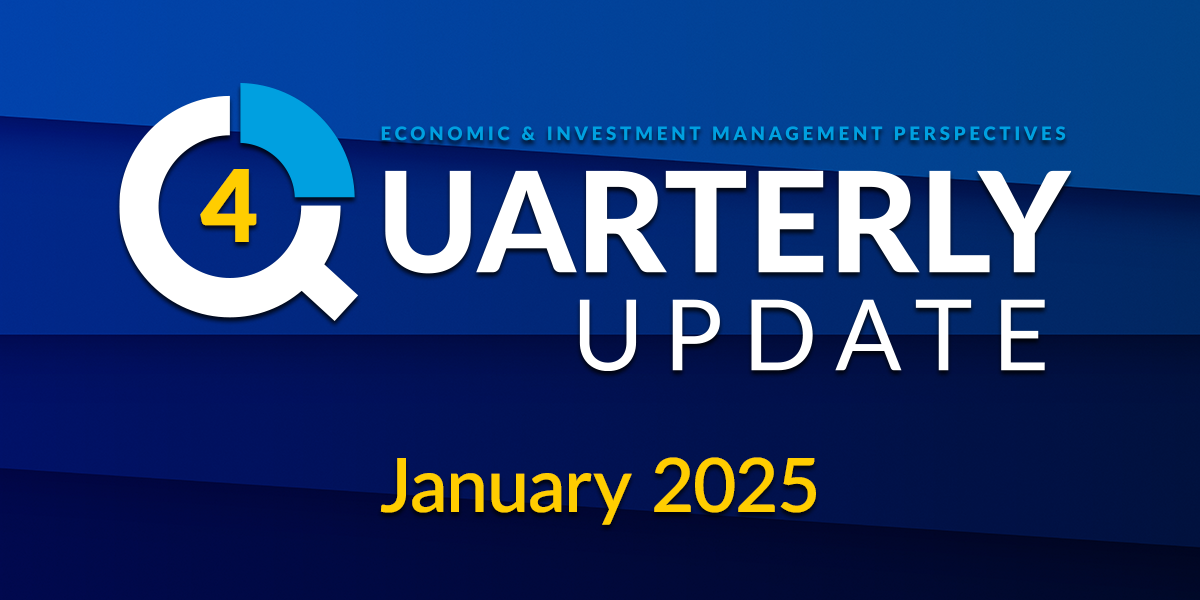
CNR Speedometers®
October 2024
Forward-Looking Six to Nine Months
TRANSCRIPT
Financial markets posted another strong quarter, but the level of volatility did remain high. At this point, just one month away from the U.S. election, we believe the overall tone has turned cautious, especially with the increased intensity in the Middle East. But even with these nonfinancial risks, recent economic data, including the September employment report and measures of services activity, do show that the economy is still expanding well above average levels.
Revisions show that in the second quarter, GDP grew at 3%, and the Atlanta Fed’s real-time indicator of growth stands at about 2.5%. So, with that backdrop, we made two positive adjustments for our market outlook this month.

■ Previous Month ■ Current Month
Monetary Policy
What we see
Monetary policy is one of two ways the government can influence the economy and financial markets. By manipulating interest rates, the Federal Reserve can raise or lower the cost of money to stabilize or stimulate the economy. For example, if the cost of credit is reduced, more people and firms will borrow money and the economy will grow.
Dial 1: Monetary Policy, 0:54— The first is with monetary policy. Our outlook here became more positive in October after the Federal Reserve’s first interest rate cut. That marked a key turning point for the economy, and after a long period of rate hikes, the Fed does seem set for a multiyear cycle of rate cuts. The move follows a slower pace of inflation and the recent rise in unemployment from 3.4% to 4.2%, and that aligns with the Fed’s dual mandate of price stability and maximum employment. And at the last Fed meeting, they cut rates by 50 basis points, a more aggressive step than the usual 25 (bps). That shows their commitment to support the economy proactively.
And unlike previous times when such large rate cuts were responses to major market events, like the 2020 pandemic or the 2008 financial crisis, this cut is more of a precaution to maintain economic growth. So, the Fed’s proactive approach increases the likelihood of a soft landing —where the economy slows but avoids a severe downturn — and lower borrowing costs are expected to support both consumers and businesses.

■ Previous Month ■ Current Month
Consumer Sentiment
What we see
How consumers feel about their overall financial health as well as that of the economy on the short and long term. This is an important indicator, as the consumer is the largest driver of the U.S. economy.
Dial 2: Consumer Sentiment, 1:56— In turning to consumers, we’ve also upgraded our view on consumer sentiment. Despite a challenging backdrop of inflation and rising interest rates over the past few years, consumer spending has continued to increase, and that’s been helped by strong household finances. Wages have also outpaced inflation since last year and household debt remains low.
While consumers are shifting their spending to essentials and delinquencies are rising for lower income households, the Fed’s recent pivot toward easing policy is likely to boost consumer confidence. It’s also showing up in the numbers. The conference board’s consumer confidence index, which is influenced mostly by employment conditions, has held up better than the Michigan sentiment index, which is mostly focused on household finances and inflation.
However, what’s important is that the gap between these measures is starting to close, which indicates an improving overall outlook.
So, in conclusion, the economy is expected to slow to long-term trends over the next year, but growth does remain sustainable.
The recent Fed rate cut is a decisive step in what’s likely to be a gradual series of cuts. So, with a strong labor market and solid consumer spending, the Fed is likely to approach this easing cautiously to avoid rekindling inflation concerns. And history shows that when rate cutting cycles coincide with no recession, the equity market tends to perform well over the next 6, 12 and 18 months. So, while volatility may rise as the election approaches, it typically subsides quickly as investors refocus on economic fundamentals.
And for fixed income investors, the shift to a rate-cutting environment increases the risk of holding too much cash. So, we recommend considering longer term bonds to take advantage of the upcoming lower interest rate environment.
Important Information
The information presented does not involve the rendering of personalized investment, financial, legal or tax advice. This presentation is not an offer to buy or sell, or a solicitation of any offer to buy or sell any of the securities mentioned herein.
Certain statements contained herein may constitute projections, forecasts and other forward-looking statements, which do not reflect actual results and are based primarily upon a hypothetical set of assumptions applied to certain historical financial information. Certain information has been provided by third-party sources and, although believed to be reliable, it has not been independently verified and its accuracy or completeness cannot be guaranteed.
Any opinions, projections, forecasts, and forward-looking statements presented herein are valid as of the date of this document and are subject to change.
CNR Speedometers® are indicators that reflect forecasts of a 6-to-9-month time horizon. The colors of each indicator, as well as the direction of the arrows represent our positive/negative/neutral view for each indicator. Thus, arrows directed towards the (+) sign represents a positive view which in turn makes it green. Arrows directed towards the (-) sign represents a negative view which in turn makes it red. Arrows that land in the middle of the indicator, in line with the (0), represents a neutral view which in turn makes it yellow. All of these indicators combined affect City National Rochdale’s overall outlook of the economy.
City National, its managed affiliates and subsidiaries, as a matter of policy, do not give tax, accounting, regulatory, or legal advice, and any information provided should not be construed as such.
© 2024 City National Bank. All rights reserved.
NON-DEPOSIT INVESTMENT PRODUCTS ARE: • NOT FDIC INSURED •NOT BANK GUARANTEED •MAY LOSE VALUE


